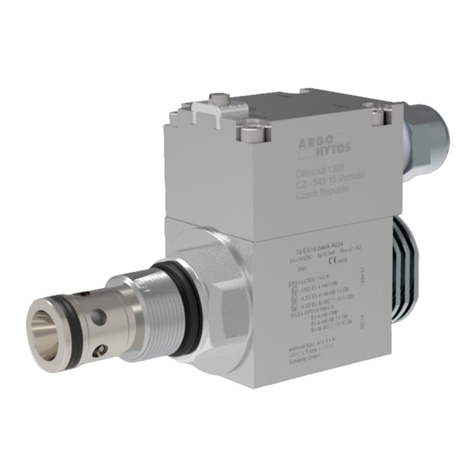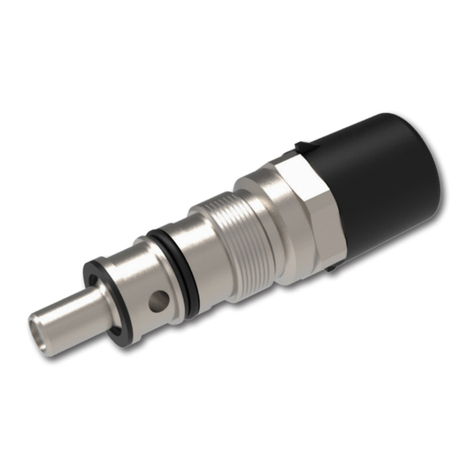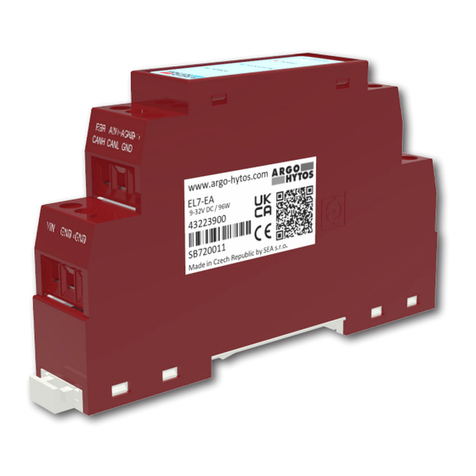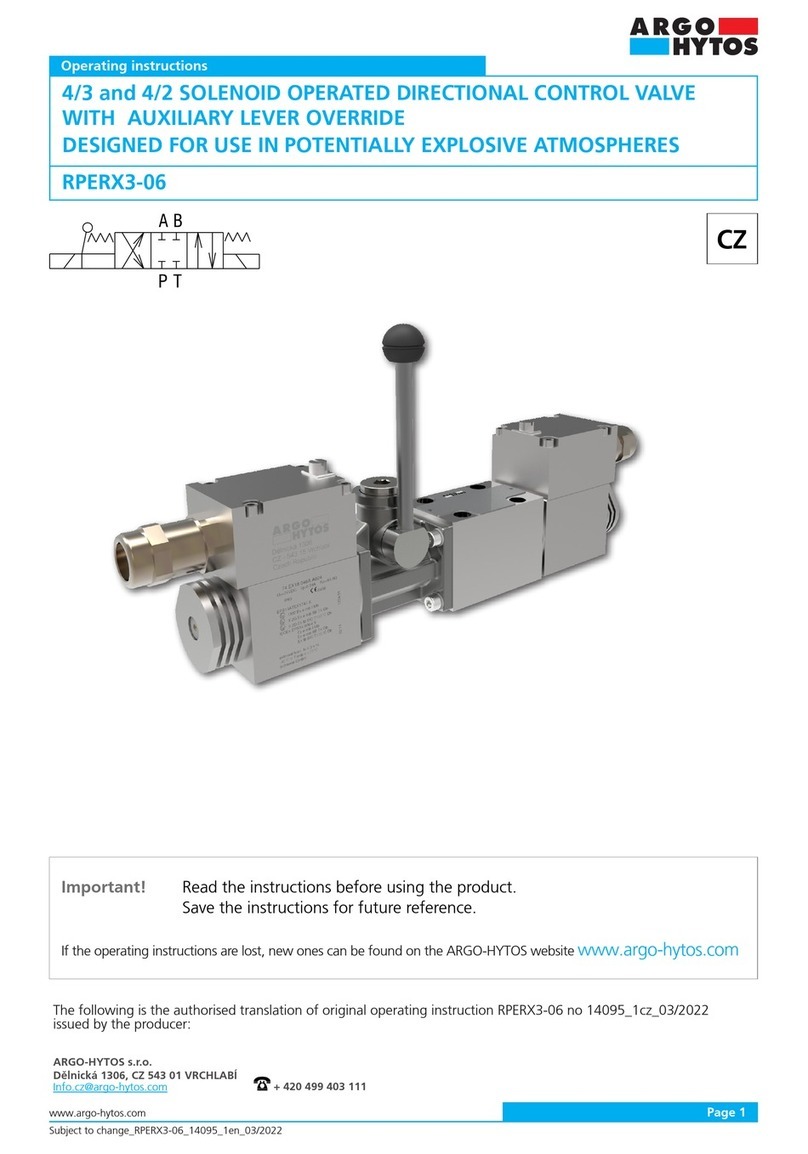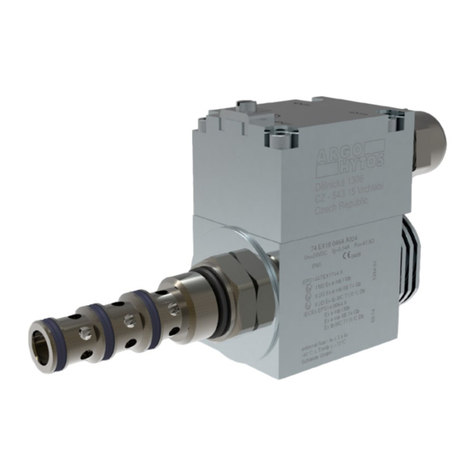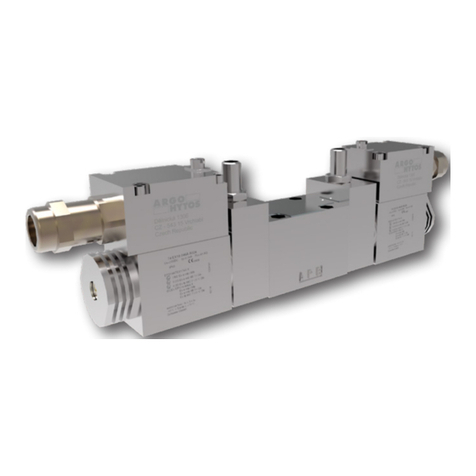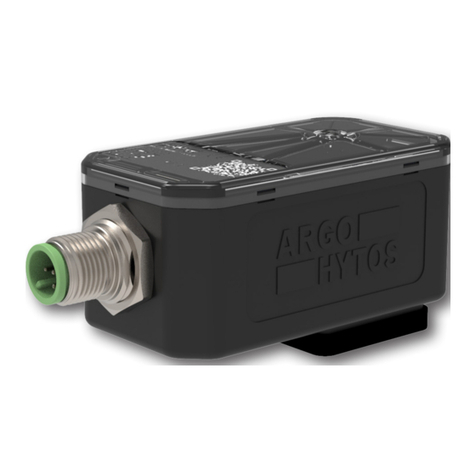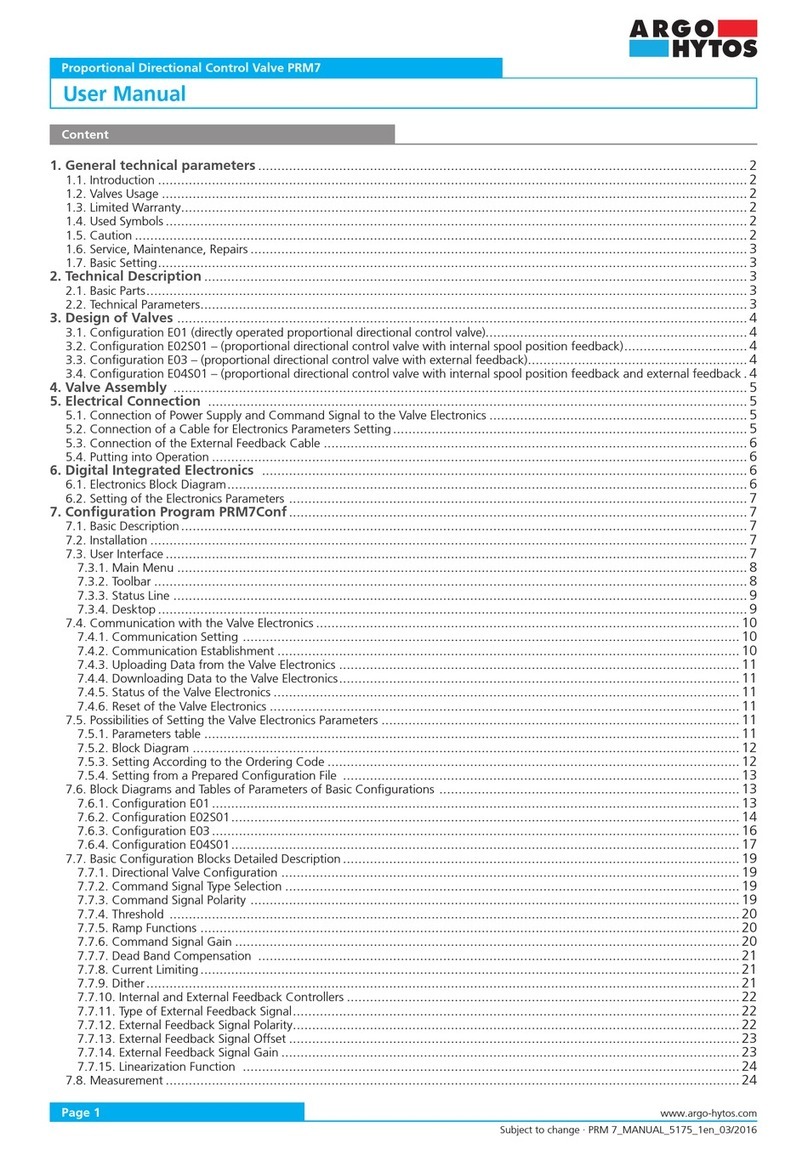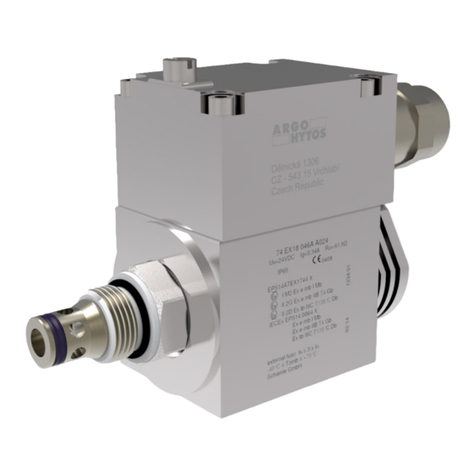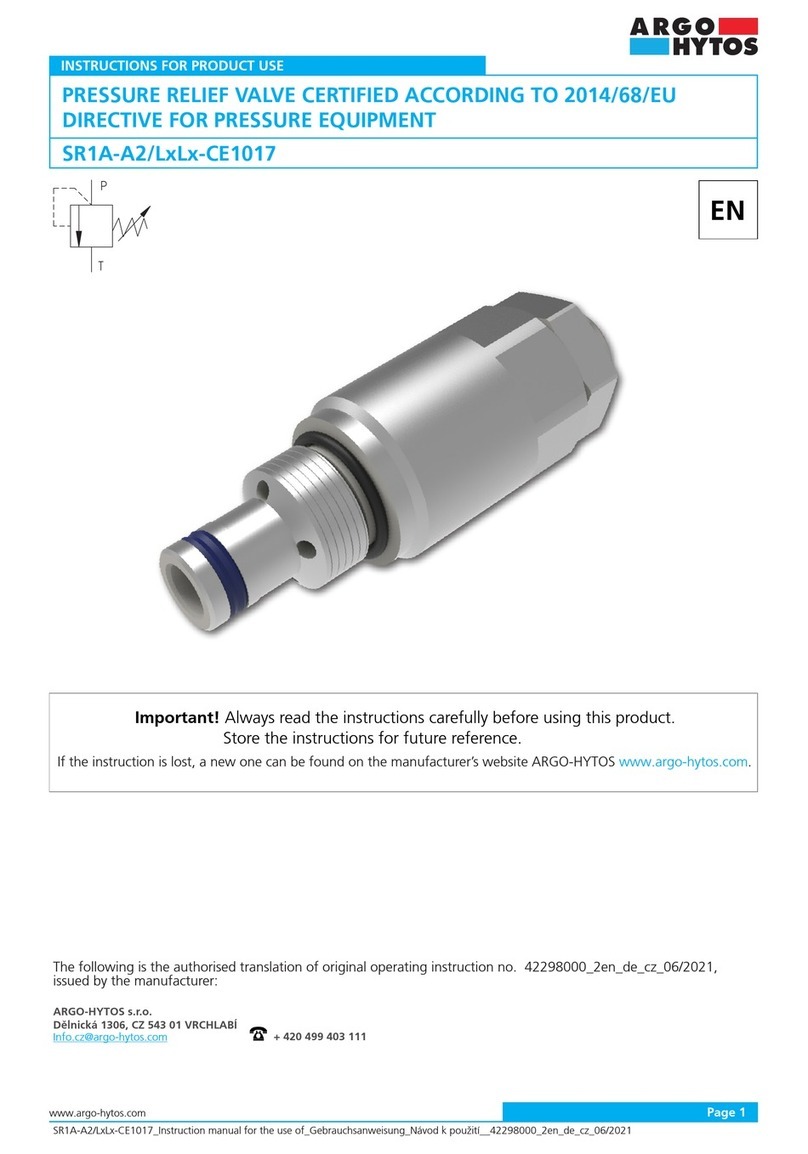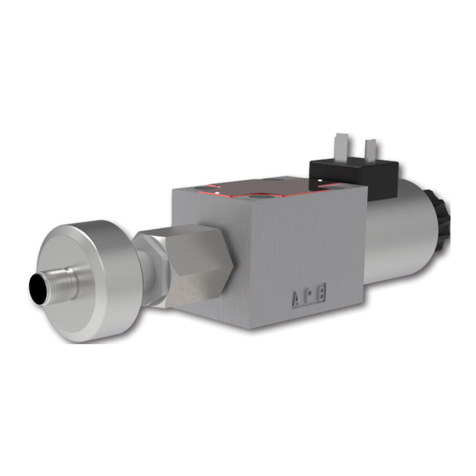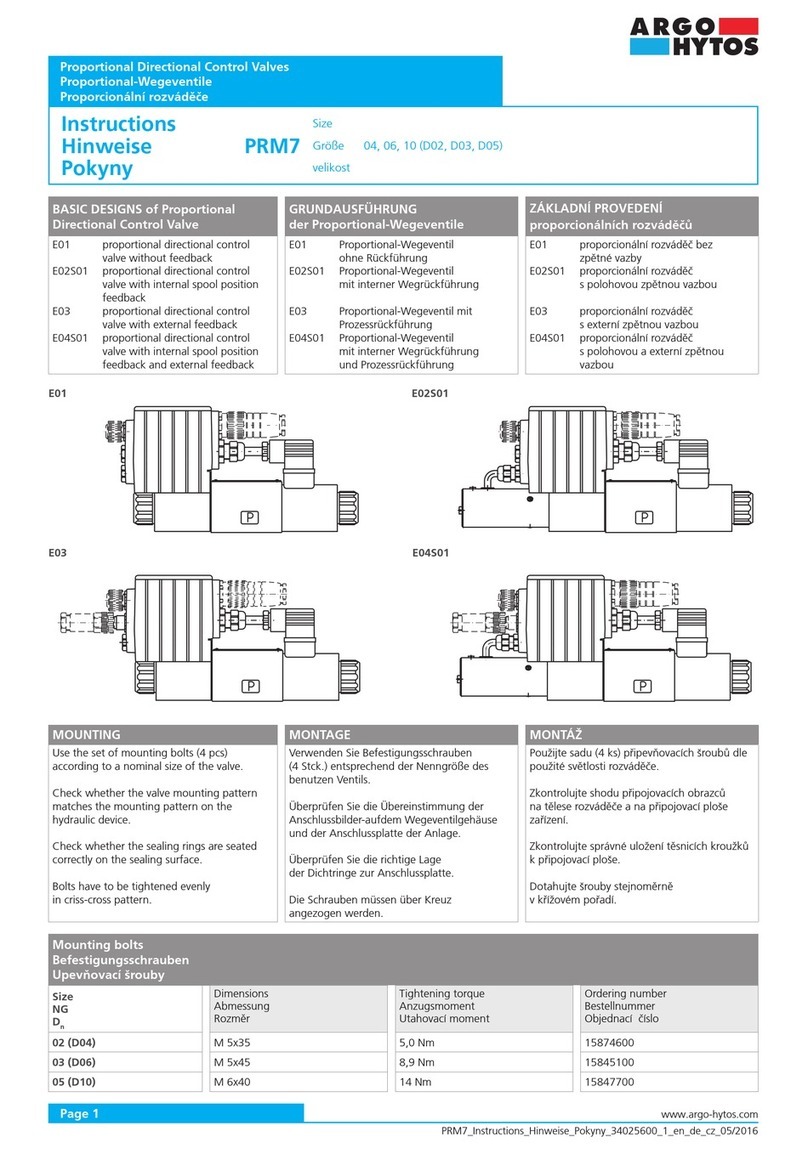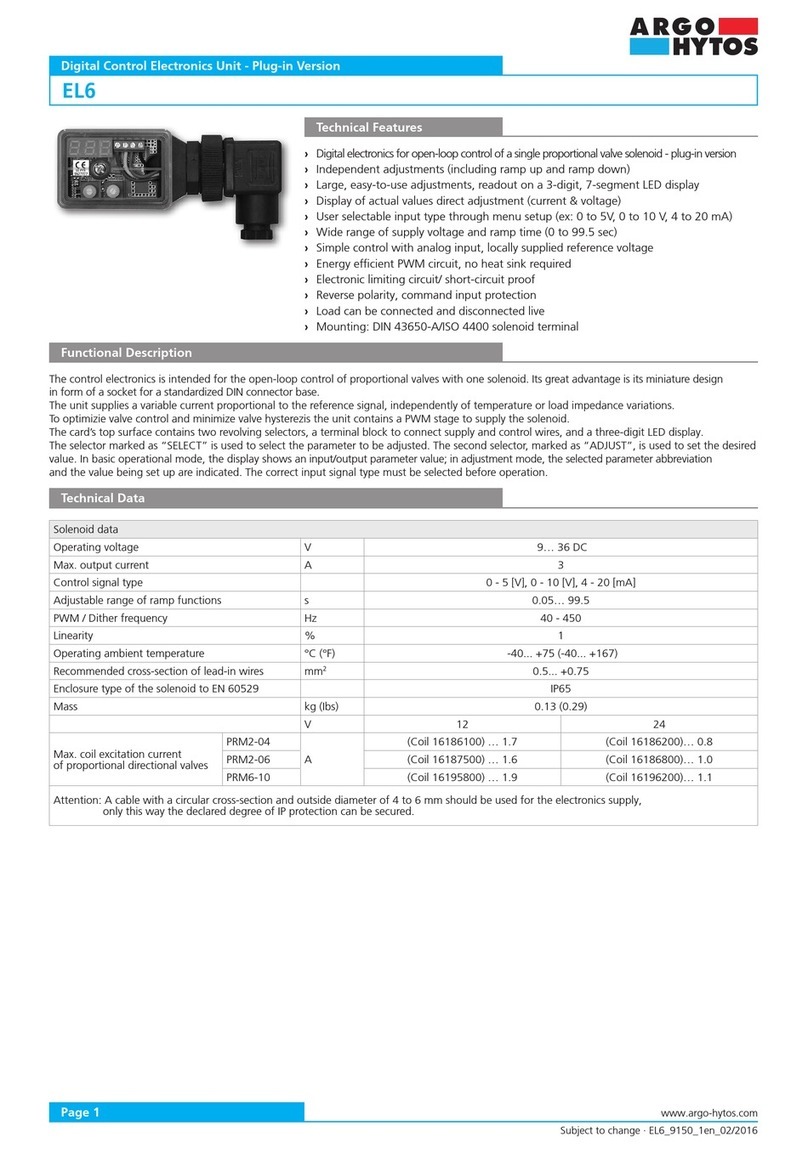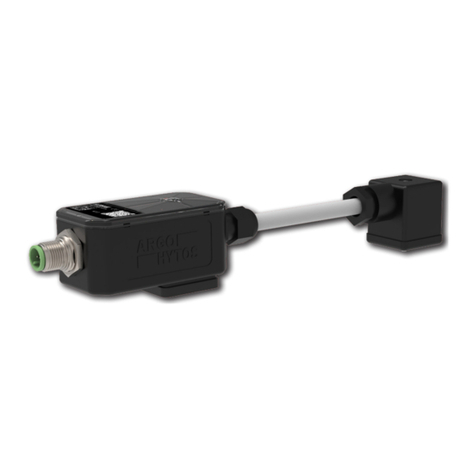
Subject to change_RPEX3-06_14054_1en_03/2022
Page 7
www.argo-hytos.com
The valves are available in three surface temperature classes:
T4 with a maximum surface temperature of 135 °C
T5 with a maximum surface temperature of 100 °C
T6 with a maximum surface temperature of 85 °C
The use of the valve in the temperature class is subject to the maximum supply voltage of the coil not being exceeded, the working
fluid temperature not being exceeded and the ambient temperature not being exceeded (see Table 4.4 Basic technical parameters)
2. Valve protection against initiation of explosion of explosive atmosphere
2.1 Protection of electrical parts
The electrical part of the valve is an ATEX and IECEx certified solenoid coil.
The basic type of protection is to pot the coil with potting compound „m“ (EN 60079-18, IEC 60079-18). For a DC-powered coil, protection is
combined by potting the coil with „m“ using a terminal block with „e“ certification (EN 60079-7, IEC 60079-7).
In addition, a fixed „t“ closure is used for dust (EN 60079-31, IEC 60079-31).
EPS14ATEX1744 X IECEx EPS14.0064 X
AC
l M2 Ex mb I Mb Ex mb I Mb
lI 2G Ex mb IIC T4, T5, T6 Gb Ex mb IIC T4, T5, T6 Gb
lI 2D Ex mb IIIC T135°C, T100°C, T85°C Db Ex mb IIIC T135°C, T100°C, T85°C Db
DC
l M2 Ex eb mb I Mb Ex eb mb I Mb
lI 2G Ex eb mb IIC T4, T5, T6 Gb Ex eb mb IIC T4, T5, T6 Gb
lI 2D Ex tb IIIC T135°C, T100°C, T85°C Db Ex tb IIIC T135°C, T100°C, T85°C Db
2.2 Cable grommet
The cable grommet is a separately certified component with ATEX and IECEx certification:
I M2 Ex eb I Mb
II 2G Ex eb IIC Gb
II 2D Ex tb IIIC Db
2.3 Protection of non-electrical parts
The non-electrical part of the valve consists of the hydraulic part and the solenoid control system.
The safety of the non-electrical parts has been ensured and assessed according to ISO 80079-36 and ISO 80079-37 and
EN ISO/IEC 80079-38
.
› The moving parts, the spool/cone, armature and pin of the control system, perform a sliding motion in a space separated by a seal from the
surround ing environment and flooded with working fluid.
› Not exceeding the maximum surface temperature of the given temperature class is conditioned by not exceeding the maximum temperature
of the working fluid (70 °C), the maximum ambient temperature (see table 4.4 Basic technical parameters) and the nominal voltage of the coil.
› The valve body and spool body are of robust construction, sufficiently resistant to destruction by mechanical shock.
(Valve body impact resistance test performed according to EN IEC 60079-0 paragraph 26.4.2: two impacts with a weight with a hardened head of
diameter D25 mm, weighing m = 1 kg, falling from a height of 0.7 m, with a total potential energy of 7 J)
› The hydraulic section has sufficient compressive strength, tested at 1.5 times the maximum operating pressure of the fluid.
› The construction materials used meet the requirements for limited content of certain elements to prevent the formation of electrical cells and
excessive corrosion.
› The surface materials used do not produce sparks during mechanical impacts.
› The sliding rod of the manual emergency control N7 of the pilot valve is protected by a sealing sleeve against the ingress of contaminating
particles, especially hard particles, which could create an initiating spark.
2.4 Applicable legislation and standards
The valve complies with the relevant requirements of legislation and standards:
Directive 2014/34/EU (harmonized NV 116/2016) Equipment for potentially explosive atmospheres (ATEX)
IECEx OD 009 Operational Document
Standards used to assess the conformity of the electrical parts:
CENELEC EN IEC 60079-0
Explosive atmospheres – Part 0: Equipment – General requirements
EN 60079-7, IEC 60079-7
Explosive atmospheres – Part 7: Equipment protection by increased safety „e“
EN 60079-18, IEC 60079-18
Explosive atmospheres – Part 18: Equipment protection by encapsulation „m“
FTZÚ 22 ATEX 0032X, IECEx FTZÚ 22.0004X
Non-electrical parts
of valve
I M2 Ex h I Mb
II 2G Ex h IIC T4, T5, T6 Gb
II 2D Ex h IIIC T135°C, T100°C, T85°C Db
